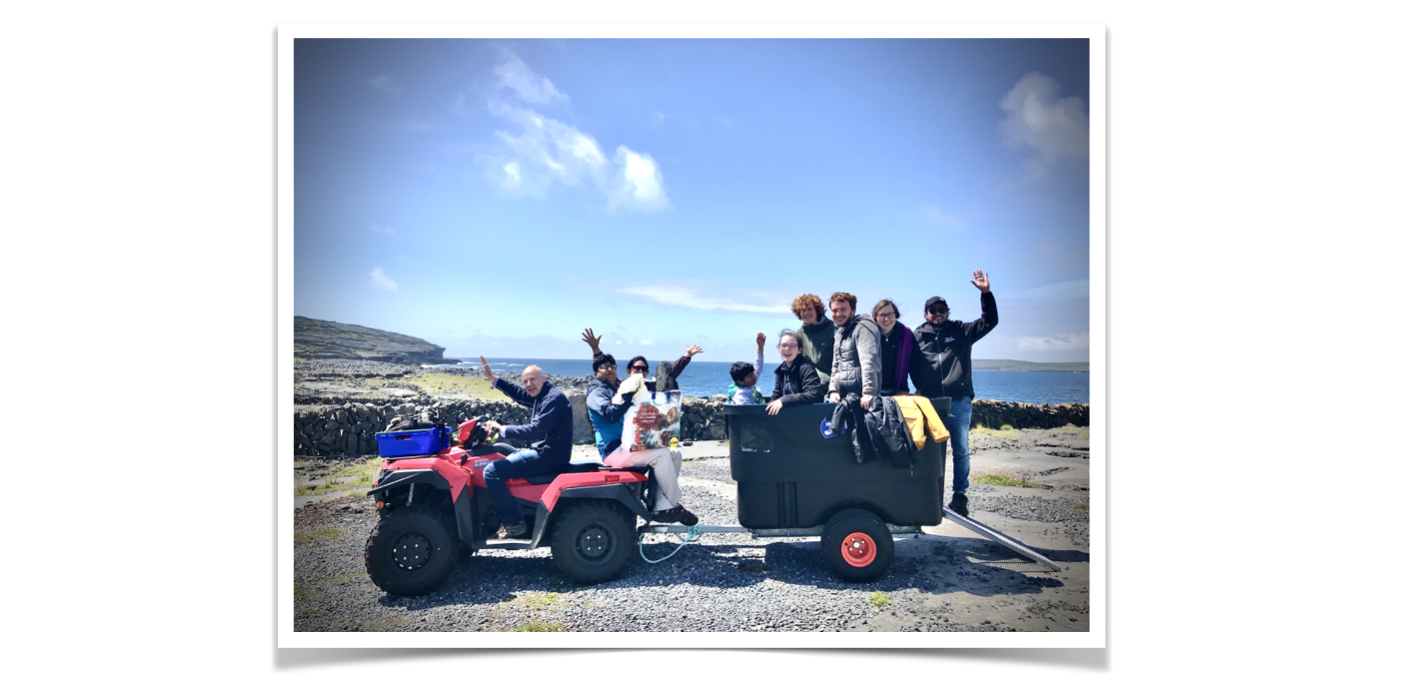
This is now exactly two years since I started surveying the Aran Islands with my backpack in a desperate search for a place to build a scientific mobile research station. Highwave is not a conventional research project with a few sensors deployed and swiftly recovered to retrieve a set of data that a group of scientific can digest it over a decade. It's a long term research project with real time cloud data of all kind and countless hours of supercomputer calculation bolted to the edge of a cliff... Two years and a pandemic later, there are several ways to look into Highwave
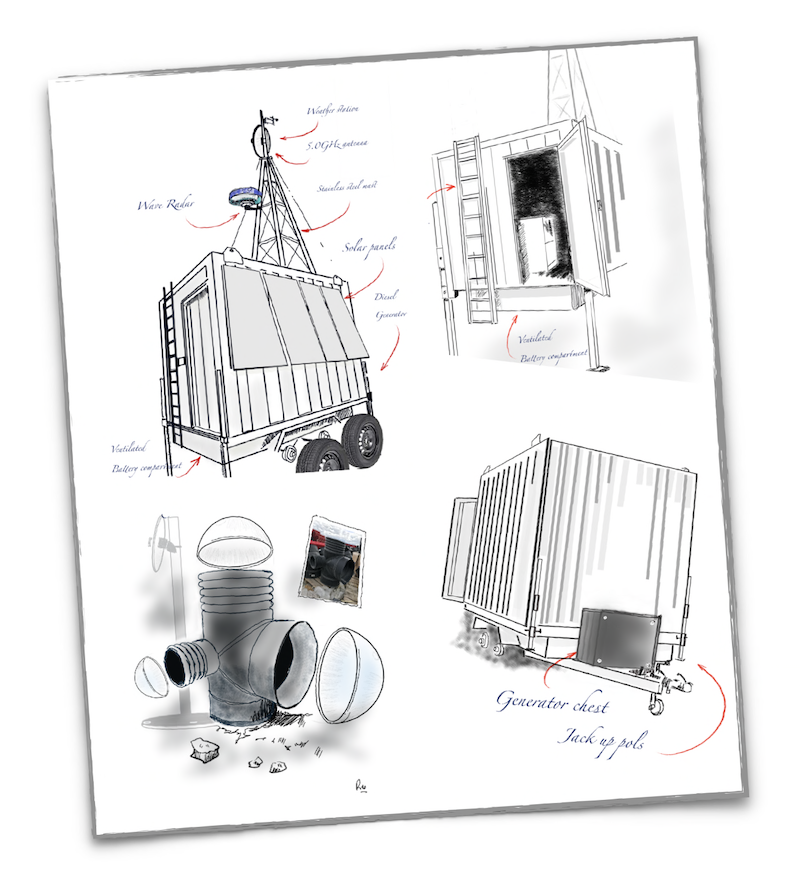 Highwave is a sketchbook... After countles hours drawing plans, sketching prototypes and meeting people the HIGHWAVE
Highwave is a sketchbook... After countles hours drawing plans, sketching prototypes and meeting people the HIGHWAVE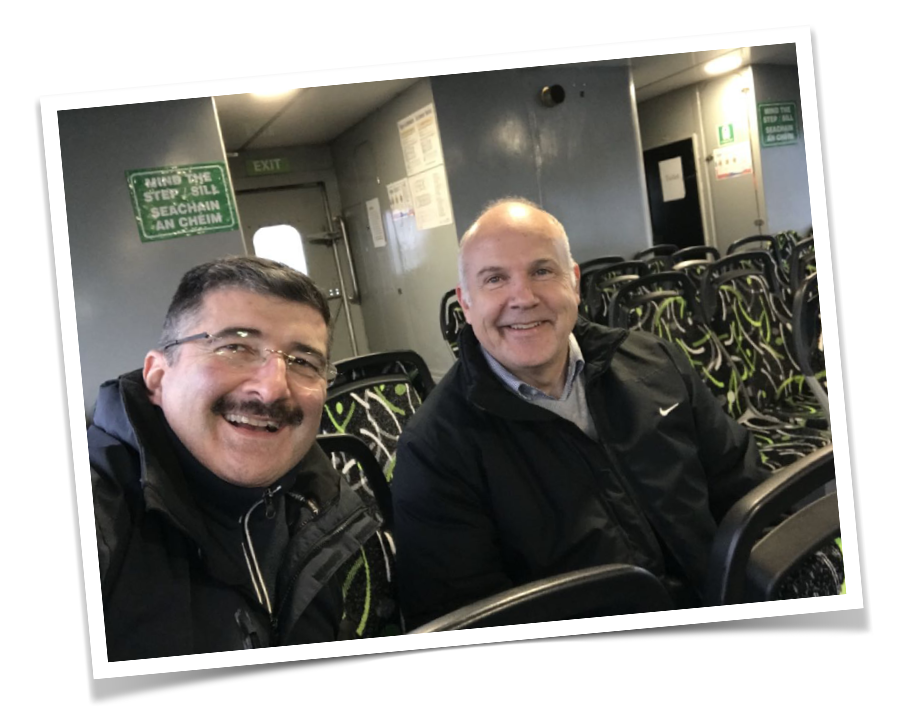 workshop in Connemara first came to life. It has been the starting point of our work on the west coast of Ireland. We've built there a lot of our field equipment starting with our Mobile Research Module and the Workshop Module that goes with it. In the background some Intranet, optical fibre, cloud storage and most importantly a research team were also assembled from scratch. Later we connected the island to the mainland with our own microwave data connection. Then the first instruments started streaming data live from Inishmaan or the sea surounding the island...
workshop in Connemara first came to life. It has been the starting point of our work on the west coast of Ireland. We've built there a lot of our field equipment starting with our Mobile Research Module and the Workshop Module that goes with it. In the background some Intranet, optical fibre, cloud storage and most importantly a research team were also assembled from scratch. Later we connected the island to the mainland with our own microwave data connection. Then the first instruments started streaming data live from Inishmaan or the sea surounding the island...
Highwave is a vision brought to life in 2019 after (yet!) another very wet field trip to the Aran Islands. But truly, it comes after a long and fruitlful colaboration with Frederic Dias and many trips around the country (Aran, Blasket, etc) trying to source the perfect wave spot for what would be known as the Highwave Project. 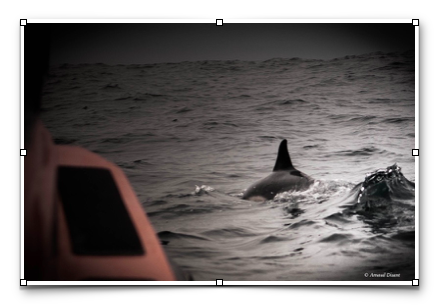 Actually we never found the spot, the spot found us... It all happened during a public meeting when the community of Inishmaan offered to help us in a very swift and efficient manner. After we explained our scientific project, the experiments we had in mind and the possible outputs that could derive from these experiments, land owners, fishing professionnals and local institytion representative within the community of Inishmaan offered to help us.
Actually we never found the spot, the spot found us... It all happened during a public meeting when the community of Inishmaan offered to help us in a very swift and efficient manner. After we explained our scientific project, the experiments we had in mind and the possible outputs that could derive from these experiments, land owners, fishing professionnals and local institytion representative within the community of Inishmaan offered to help us.
Next, I clearly remember the face of a couple of donkeys watching me measuring how wide the narrow roads of Inishmaan really are? Two years and one pandemic later, here we ar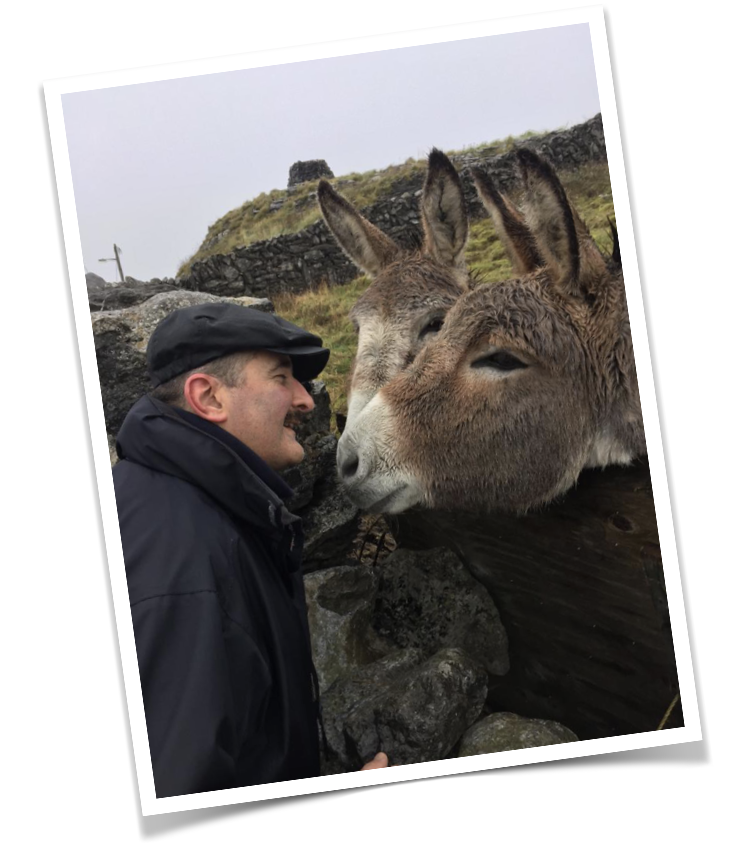 e, ready to really start our scientific experiments. It certainly wasn't easy, else it would not be called science in the first place. But hopefully we aren't alone and we've received support from many that truly diserved to be acknoledged. Their names are Pat, Ciara, Sean, Mairtín(s), Col
e, ready to really start our scientific experiments. It certainly wasn't easy, else it would not be called science in the first place. But hopefully we aren't alone and we've received support from many that truly diserved to be acknoledged. Their names are Pat, Ciara, Sean, Mairtín(s), Col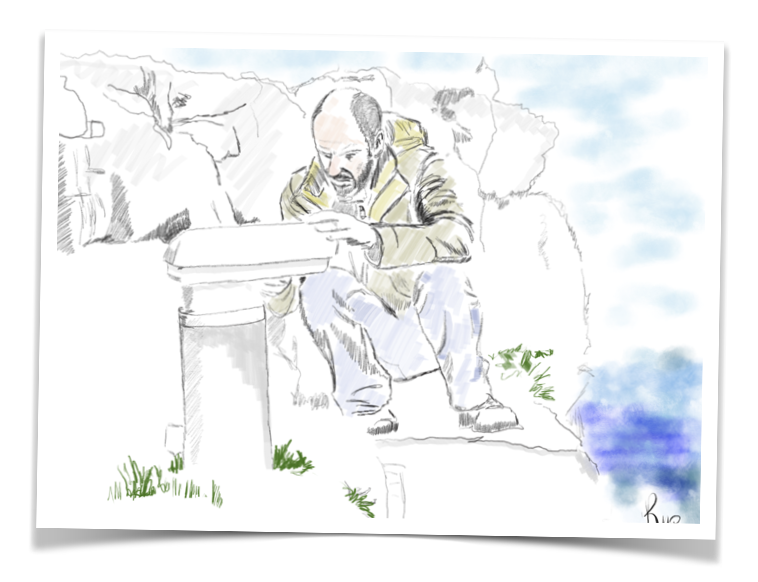 m, Cliona, Arek, Ronan or Mairead to name a few. They are here for us each time we need help, keeping an eye on our instruments, lifting a stone or introducing us to the local customs.
m, Cliona, Arek, Ronan or Mairead to name a few. They are here for us each time we need help, keeping an eye on our instruments, lifting a stone or introducing us to the local customs.
Nothing is really conventional in Highwave, and the logistic around our research project is certainly one of a kind. Aer Arann, Galway Maritime, Lasta Mara have shipped tons of equipment for us. Graigne, Maire, Simon, Cormac, Elaine, Winnie, Pierce and let's not forget the lads aboard the cargo MV Saoirse Na Mara and MV Chateau Thierry, each and every single one of them have played a role in Highwave. Probably even more so the crew around the Britten Norman islander aircraft for taking us to work each day and bringing us back home safely.
There are many ways to look at those two years, I also like looking at it as: "Two years, and 24-hours-of-burning-fossile-fuel-in-the-generator". Because that's all it took us a few kiters of green diesel, the rest of the energy we have made it ourselves using the sun and the wind freely available to us. The research station made of a workshop module and a research module are both connected to the mainland using our very own private Wireless Maritime Arean Network (WMAN). After Cork, Waterford, Rosslare this is the forth WMAN built in Ireland, very handy to shift data at sea. As a UCD research Engineer, I am very proud of the 24-hours-of-burning-fossile-fuel-in-the-generator part. What it means basically is that we have managed building all this running our diesel generators to the stric minimum.
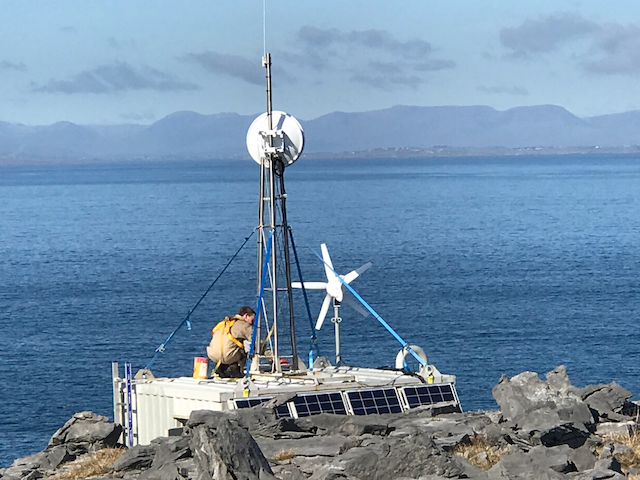 Dr Daniel Gilles performing routine maintenance on our research module
Dr Daniel Gilles performing routine maintenance on our research module
How did we achieve this? Well first of all with good project planning. We brainstorm our work and repeat our process several time before we are heading to the island. Most parts are designed, manufactured and pre assembled in our Connemara workshop (basecamp). Second we have designed our very own state of the art solar and wind energy powered telecommunications to and from the island. Thirdly we are not short of man power (and brain power), with a team of seven plus researchers dedicated to Highwave, on the field we have more than enough people to work on the most challenging projects (read the POD article).
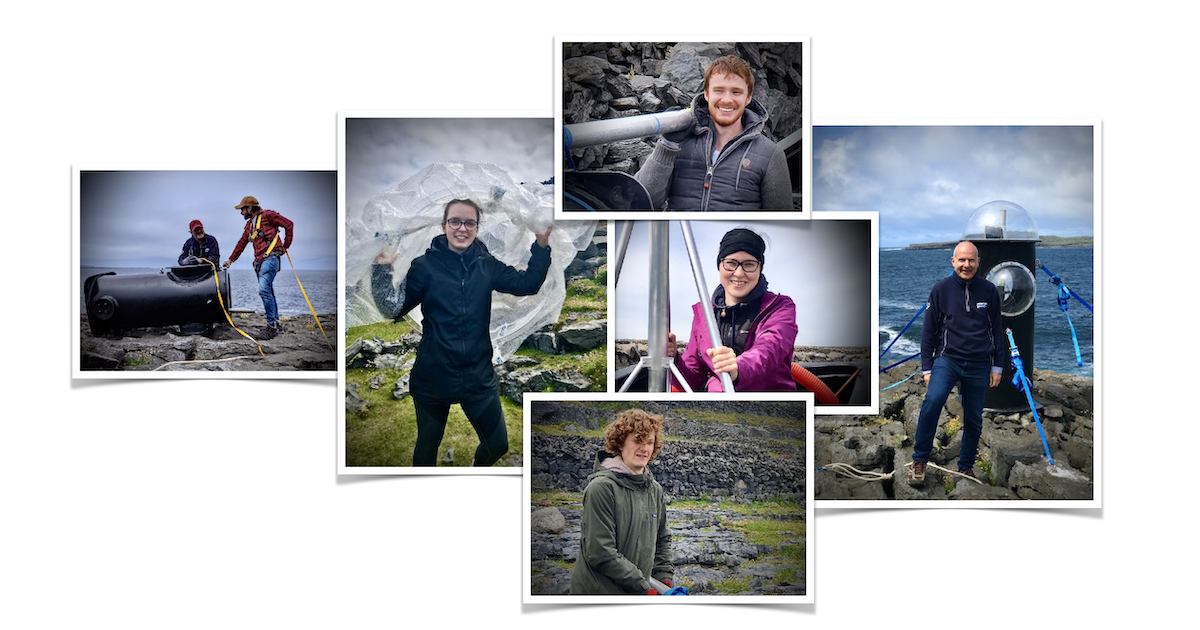 From right to the left: Pr Frederic Dias, Dr James Steer, Tatjana Kokina, Claire Bergin, Daniel Santiago Pelaez-Zapata, Arnaud Disant
From right to the left: Pr Frederic Dias, Dr James Steer, Tatjana Kokina, Claire Bergin, Daniel Santiago Pelaez-Zapata, Arnaud Disant
Highwave is all about wave breaking, so it's taking place at sea of course but on land as well. And so, a year ago, we've started recording our very first data with two spotter buoys a weather station and recently we have started using a seismometer to monitor the impact of wave breaking on the cliffs of Inishmaan. Outreach is an important part of our mission on the islands, we are engaging with the local population, tourists and the local schools, thanks to the teachers of Inishmaan who are among our most enthusiastic fans.
Strictly from an engineering point of view, Highwave is a real challenge for the mind, for the soul and for the body as well. The issues we are presented with are often hard to overcome. We had to invent things that are not widely available, like our Portable Observation Devices (POD for short). When you come to think about it, the ground we use in Formna was just a field last year, coverd with stones, no power, no telecommunications, no shelter. We built it up ourselves so those of us previously familiar with Fourier transform and Navier–Stokes equations also had to become familiar with electrics, masonry, mecanics or telecommunications. The pandemic tested our resilience, the students who came occasionaly to help me over the winter, had to go through a lot to protect the local population (extra self isolation). Having trained ETO Engineers at the National Maritime College of Ireland for many years, I am very keen to share knowledge and instruct my colleagues in the field instrumentation. Tatjana, Claire, James, Daniel, Ryan and Cian are learning and taking field instrumentation to the next level.
I wrote earlier above that it was tough for the body too, because Inishmaan is a very rugged place to run scientific experiments. Like many Research Engineers around the world I presume, I have often dreamed of spending some time in Antartica or a research vessel challenging my engineering skills. Inishmaan is certanily one of the most remote place in Europe to run scientific experiments, I know I've just spent the winter there... and I can tell it is challenging enough for engineering skills...

Having spent more time than ever watching waves and the cliffs of Aran I often imagine the same cliffs beneath the surface of the sea. The seafloor is made of steep hills and vast plains, we don't see it but it's there and it's easier to understand when we are watching pictures of a planet emptied from all oceans (Mars)
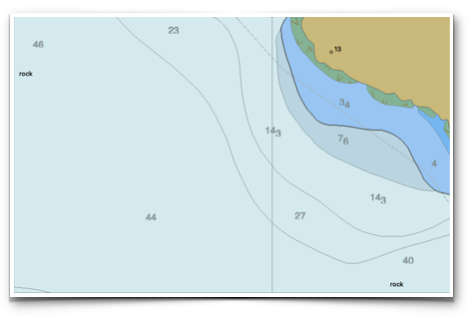
I wish more resource would be made available to explore the other 71 percents of the Earth's surface that are covered with water. As of June 17, 2021, a total of 570 people from 41 countries have gone into space (Wikipedia). I believe there are currently 10 people in space at the time writing these lines. These astronauts and cosmonauts are the crew of the Expedition 65 mission aboard the International Space Station (408 km) and the Chinese mission to Tiangong (425 km). I am almost certain there aren't half as many people at this very point in time 425 meters below the surface of the ocean. Until now, only three people have successfully made it to the bottom of Challenger Deep, the planet's deepest point at the southern end of the Mariana Trench. Back in 1960, oceanographers Don Walsh and Jacques Piccard took a dive of 10,916 m. Victor Vescovo descended 35,853 feet (10,927) in 2019, breaking the record for deepest dive ever.
At the very bottom, he found colorful rocky structures, weird critters and curious sign of time, the ever-pervasive mark of humankind — plastic.
Inis Méain, 20 Meitheamh 2021